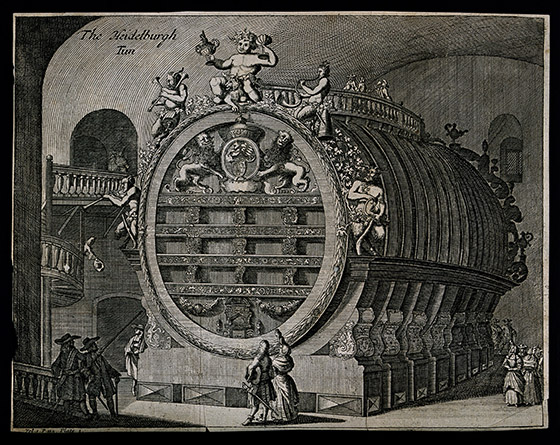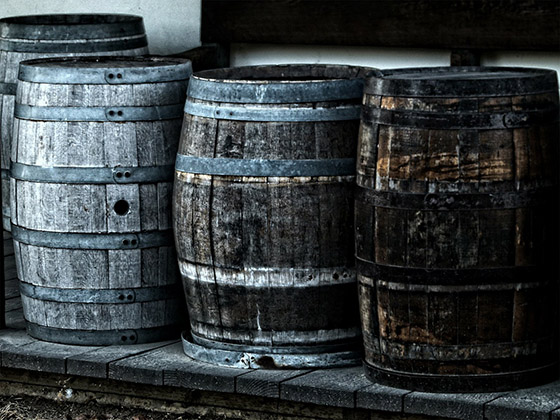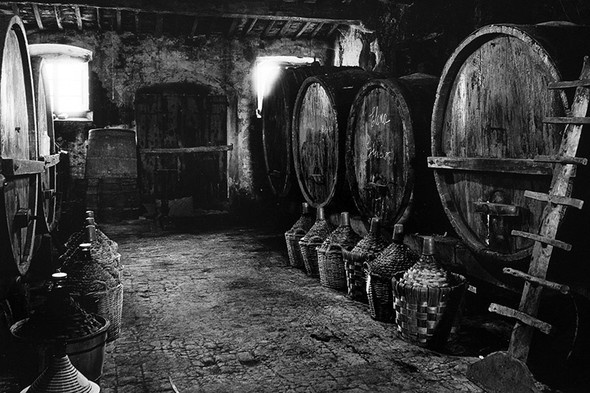You are new here? For the 3rd part of this article click here.
If there are star winemakers, are there also star coopers?
Nowadays perhaps not, or rather the question is difficult to interpret. In the past, however, this category clearly existed. True, at that time the people who deserved this title were those who, despite their circumstances, were capable of creating really huge casks. Thus Michael Werner, Landau cooper, begs for first place, he who even wrote his name into the profession’s history with two casks. In 1589, Marquis Johann Kasimir ordered an enormous 1325hl cask for his Heidelberg castle. It took three years to make and is now considered to be the first large cask. (As can also been seen on numerous contemporary representations.) Unfortunately, the barrel was destroyed in 1633 during the thirty-year war. Then, in 1594, we find our hero, the Landau star cooper in Gröningen, where he produced his next enormous cask. This cask, however, has survived for posterity and can now be found in Göringen near Halberstadt, in the Spiegelberg cellar. The names of other producers of enormous casks have also normally survived. Without aiming for completeness, here are a few of their names.

Johann Meyer, master cooper, produced the so-called Heidelberg large cask, which had a capacity of 2090 hectolitres, a length of 10.5 metres and a girth measurement of 9.6 metres. Heidelberg anyway hit a bad patch and this cask was destroyed during the Orléans War. Speaking of the famous university town, the name of J J Engler Jnr, master cooper, also belongs here. He was commissioned by Carl Theodor Elector to produce the third giant cask in the town’s history. This cask already achieved a capacity of 2360hl and it seems the curse was broken, as the cask is still in existence, albeit only as one of the sights. It last saw some wine in 1789. After these foreign adventures, let’s take a look at some things in Hungary worthy of fame. First place here is definitely taken by Márton Donner, who in 1823 became known internationally for his Nagyszombat or Szulinyi-type cask (1072hl). In 1841, allegedly, it counted as the largest fillable cask in the wine-producing world at that time, moreover beautiful wood carvings decorated its base. The base is split into three sections, with the top part combining the Holy Hungarian crown and coat of arms, watched over by two angels. The middle part is decorated with a rectangle depicting a jolly harvest surrounded by grape decorations, whereas the lowest is dominated by a decorated barrel door. The cask otherwise gained renown as it could be viewed for a fee in Vérmező and Vienna’s Prater too. It was then also exhibited in the Hungarian pavilion at the Paris World Exhibition in 1878. The cask was finally completely ruined in 1899. The decorations of the base of the barrel were created by both unknown woodcarvers as well as more well-known artists, such as János Fadrusz, sculptor, creator of the famous statue of King Matthias in Cluj.

If the closing remarks come unstuck
The history of the barrel’s evolution is truly an interesting and long read. However, there is an old Hungarian saying, originating from barrel production, which is still in use today, although, we feel, few people know the original meaning. Things come unstuck (dugába dől) equally if one of your plans or intentions, which you have attached great hope to, is not successful. The saying originates from cooperage and refers to when the barrel staves, the ‘duga’ collapses. Thank God this ancient craft has not come unstuck in the last 2500 years and is still flourishing, to the great satisfaction of every wine lover.






